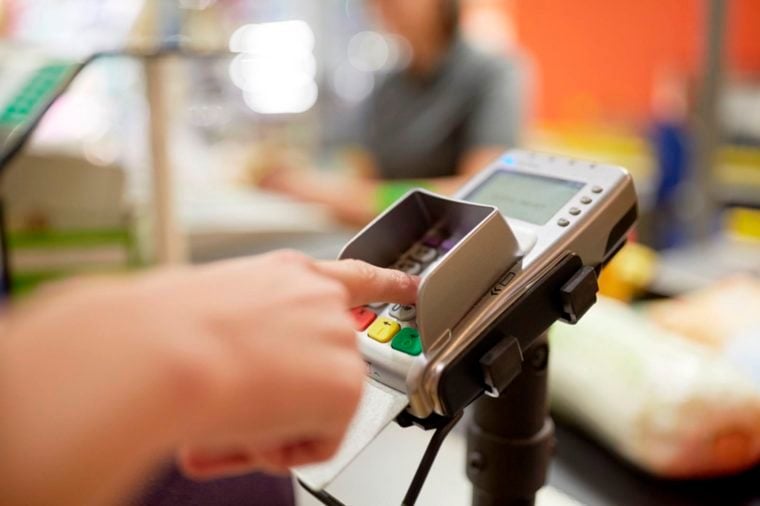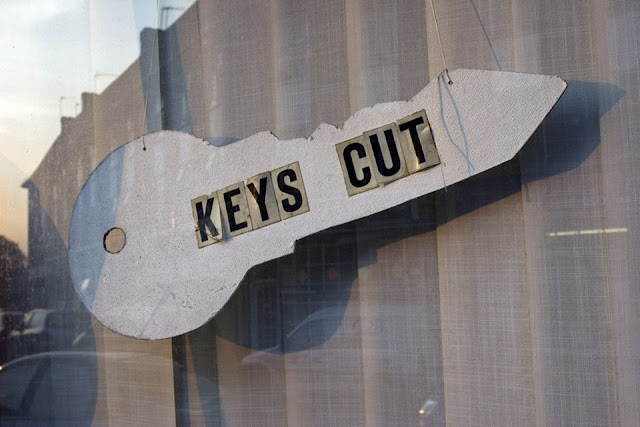Explaining the attributes of safes can be a chore to the uninitiated. The CDOJ (California Department Of Justice) put together their own list of attributes to consider when purchasing a safe.
Today, many of the items advised herein, still apply, It is up to the end user to decide for themselves, the attributes required to suit their individual needs...
Pictured above is just a random image selected online of a safe.
Choosing a safe is often difficult.
Before making a recommendation, I feel it necessary to ask some specific questions to a customer to help in determining a suitable product to recommend.
Many people do not understand the ratings systems for safes, probably because there is no written industry standard.
In the early 1990's, I worked for one of Australia's oldest manufacturers of quality safes, Kelly Safe Co PTY LTD. (they closed down in 1995, I believe). Kelly safes were considered a staple of the Australian landscape for about 100 years previously. They manufactured impressive quality safes for many of Australia's institutions, banks, high-society clubs, hotels etc.
The increasing competition from foreign products combined with the significant increase in raw materials cost, saw Kelly become less competitive in later years.
I learned much from my short time with them about how to grade safes.
There are many classifications of safes that are determined by each individual country/locallity as suitable for local conditions. The leading tester in the world (most respected) is known as the Underwriters Laboratory.
The questions I like to ask my clients are:
1. What approximate cash value of personal documents, jewellery, bank notes etc are you looking to secure?
This determines what grade of safe would be suitable for the contents.
2. Approximately how big (dimensions) would the individual pieces of content be for storage?
This determines the necessary internal dimensions of the recommended safe.
3. Are you looking for Burglary Protection, Fire Protection or both?
4. Would you prefer a bolt down facility, free-standing, on castors, wall-mount, floor mount, vault etc?
5. How much are you looking to spend?
The most important question is question #1, because this separates the designations of safes from each other and directly guides a professional to make the most suitable recommendation.
In California, the CDOJ (California Department Of Justice) uses the following terms:
California Department of Justice Burglary Rating (CDOJ)
Regulatory Gun Safe StandardsDOJ regulatory standards require a gun safe to meet either:
All of the following requirements:
- Shall be able to fully contain firearms and provide for their secure storage.
- Shall have a locking system consisting of at minimum a mechanical or electronic combination lock. The mechanical or electronic combination lock utilized by the safe shall have at least 10,000 possible combinations consisting of a minimum three numbers, letters, or symbols. The lock shall be protected by a case-hardened (Rc 60+) drill-resistant steel plate, or drill-resistant material of equivalent strength.
- Boltwork shall consist of a minimum of three steel locking bolts of at least ½ inch thickness that intrude from the door of the safe into the body of the safe or from the body of the safe into the door of the safe, which are operated by a separate handle and secured by the lock.
- Shall be capable of repeated use. The exterior walls shall be constructed of a minimum 12-gauge thick steel for a single-walled safe, or the sum of the steel walls shall add up to at least .100 inches for safes with two walls. Doors shall be constructed of a minimum of two layers of 12-gauge steel, or one layer of 7-gauge steel compound construction.
- Door hinges shall be protected to prevent the removal of the door. Protective features include, but are not limited to: hinges not exposed to the outside, interlocking door designs, dead bars, jeweler’s lugs and active or inactive locking bolts.
- Is listed as an Underwriters Laboratories Residential Security Container;
- Is able to fully contain firearms;
- Provides for the secure storage of firearms.
Burglar safes are usually made of solid steel plate or a combination of solid steel and composite fill material such as concrete. These safes are divided into categories based on the level of protection delivered and the testing endured. Here we will discuss only seven classes: B-Rate, U.L. RSC Rating, B/C Rate, C-Rate, U.L. TL-15, U.L. TL-30 and TL-30 X6.
B-RATE SAFES (ALSO U.L. RSC, RESIDENTIAL SECURITY CONTAINERS):
B-Rate is a catchall rating for essentially any box with a lock on it. The safe industry had an unwritten standard of ¼ inch body, ½ inch door. As steel prices (and shipping costs) increased manufacturers tried many things to reduce their costs. No tests are given to provide this rating. When buying a B-rate safe, look at things such as lock work, hard plates, and relocks.
U.L. Residential Security Container rating (RSC) - This UL rating is based on testing conducted for a net working time of five minutes, on all sides, with a range of tools. See U.L. TL-15 and TL-30 descriptions below for "net working time" description.
B/C-Rate Safes
This is a catchall rating for safes with at least a 1/4" steel body, 1/2 inch door PLUS additional 10 or 12 guage metal layers where composite fire resistant material is also deployed. No tests are given to provide this rating. Look at the lock work, relocks and other features when making your decision.C-Rate Safes
This is defined as a ½ inch thick steel box with a 1-inch thick door and a lock. As before, NO tests are given to provide this rating. Look at the lock work, relocks and other features when making your decision.The Underwriters Laboratory information:
Underwriters Laboratories Inc. (UL) Ratings
http://www.ul.com
TL-15
Safes given a U.L. TL-15 rating have all passed standardized tests defined in UL Standard 687 using the same tools and usually the same group of testing engineers.Construction Requirements- U.L. listed Group II, 1 or 1R combination lock.
- 750 lbs. minimum or comes with instructions for anchoring in a larger safe, concrete blocks or on the premises where used.
- Body walls of material equivalent to at least 1" open hearth steel with a minimum tensile strength of 50,000 P.S.I.
- Walls fastened in a manner equivalent to continuous 1/4" penetration weld of open hearth steel with minimum tensile
strength of 50,000 P.S.I. - One hole 1/4" or less, to accommodate electrical conductors arranged to have no direct view of the door or locking mechanism.
TL-30
Construction requirements are identical to the TL-15 above. Tests are essentially the same as the TL-15 tests except for the net working time. Testors are allowed 30 minutes and a few more tools (abrasive cutting wheels and power saws) to help them gain entrance. The label signifies the testors were unable to open the door or make a 6" square opening entirely through the door or front face within 30 minutes. Keep in mind these engineers have the manufacturing blue prints and can disassemble the safe being tested before the test begins to see how it works. They know their stuff. TL-30 x 6 - The TL-30 (30-minute) test is conducted on all six (6) sides of the safe.Other Considerations
When you begin the search for a safe it is a good idea to speak to your insurance agent and see if a particular type of safe will reduce your insurance costs. Many times you can justify the additional expense of a higher security safe because of the premium reduction. Remember no safe is burglar proof, you are buying time. The longer it takes to break in the greater the chance to be caught, and thieves don’t like to get caught.10 Things You Didn't Know About UL's Safe Testing
- The best safecrackers in the business never steal a penny. They work for UL.
- UL has been testing and certifying safes for more than 80 years. The first safe tested for burglary resistance was in 1923 and the first bank vault in 1925.
- Chisels, wenches, screwdrivers, power saws, cutting torches, crowbars, abrasive cutting wheels, jackhammers, even specified amounts of nitroglycerin are just a few of the "tools" UL technicians use during a safe attack. The idea is to test safes to worst-case scenarios. They use tools that could be found at any construction site or hardware store. They also analyze blueprints as if the burglar might have blueprints of the design and attack its weakest points to evaluate the safe for certification.
- UL's safe attack tests are conducted by a two-person crew. The object is to create an opening large enough to withdraw "valuables" (anywhere from 2- to 6-square-inches on a safe and up to 96-square-inches on a vault), activate the locking mechanism so the door opens or to cut as many bolts from the door as necessary to pry it open before the time specified in the rating requirement expires.
- Safes are rated for their resistance to attack against specific tools for a set period of time. There are a dozen different ratings, everything from ATM machines, to gun safes to bank vaults. For example, a safe that bears a Class TRTL-15X6 rating, which might be found in a jewelry store, should resist a hand tool and torch attack for a minimum of 15 minutes. A TRTL-30X6-rated safe, which would protect important documents or store money, should withstand an attack for 30 minutes. The ultimate safe rating-a TXTL60-should withstand an hour's worth of attack that includes the use of 8 ounces of nitroglycerin.
- Because of the size and weight of certain safes and vault doors, it is not always practical to have the product shipped to UL's laboratory locations. UL's burglary protection staff has traveled to destinations such as Japan, France, Israel, England, Finland, Taiwan and India.
- In addition to burglary protection ratings, UL also rates safes for their fire resistance protection. Class 350 safes protect paper documents, Class 150 safes protect magnetic tape and photographic film, while Class 125 safes protect floppy disks. In addition to the Class Rating, safes obtain an hourly rating for fire resistance-anywhere from 30 minutes to four hours.
- Another cool test UL runs on safes is an impact test. This test simulates a safe falling though multiple stories of a building-resulting from a fire that has weakened the structure. After the safe is heated to 2,000 degrees Fahrenheit in a furnace, it's raised three stories and dropped onto a pile of bricks. In order to meet the requirement, the safe can't pop open. Temperatures inside can't rise to above 300 degrees Fahrenheit and sample papers left inside have to be readable.
- The specialized suits you sometimes find technicians wearing are not just for show. Their entire ensemble, including protective coat, helmet and gloves, protects the crew against the adverse effects of sparking. After all, safety can't be taken for granted, even within the walls of UL.
- Safes are just one of the 19,000 product categories that UL tests and certifies. While UL's burglary protection team cracks combinations, shatters glass and fires .44-caliber bullets at body armor, other UL engineers and technicians keep busy testing everything from TVs, coffee makers and holiday light strings to fire extinguishers, medical CAT scan equipment and building materials.
(source...)
























